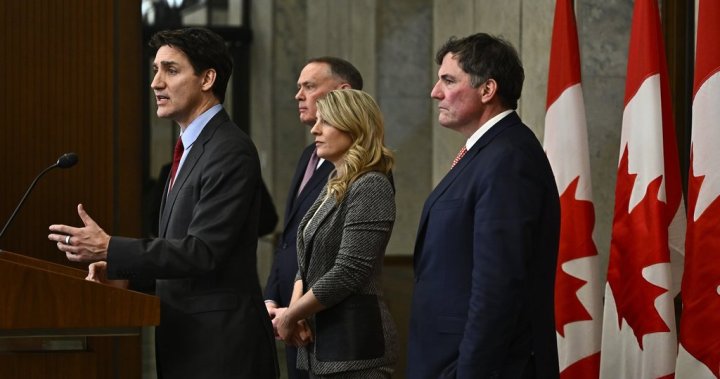The Canadian economy finds itself in a precarious state of suspended animation following US President Donald Trump’s announcement of a 30-day pause on tariffs against Canadian imports. While the temporary reprieve offers a brief respite from the looming threat of a trade war, the underlying uncertainty continues to cast a long shadow over Canadian businesses and the labor market. The averted tariffs, which were set to take effect immediately, would have imposed a 25% levy on a broad range of Canadian goods and a 10% tariff on Canadian energy exports. Economists on both sides of the border had warned of the potentially damaging consequences of such measures, predicting price hikes and economic disruption. Canada, in anticipation of the tariffs, had prepared retaliatory measures, including tariffs of its own and bans on US alcohol sales. These measures have now been temporarily shelved, mirroring the US pause.
The 30-day reprieve came after two phone calls between Prime Minister Justin Trudeau and President Trump, with the latter suggesting the tariffs could be permanently removed if a “final economic deal” can be reached. The crux of the issue, from the US perspective, revolves around border security concerns. In response, Trudeau highlighted Canada’s existing $1.3 billion plan to address these concerns, which includes the deployment of nearly 10,000 frontline personnel to protect the border and a $200 million investment in new initiatives to combat fentanyl trafficking. These initiatives underscore Canada’s commitment to border security and its efforts to address the specific concerns raised by the US administration. The temporary nature of the tariff suspension, however, leaves many questions unanswered and fuels anxieties about the future of Canada-US trade relations.
The Canadian government is actively demonstrating its commitment to border security. Public Safety Minister David McGuinty and Terry Duguid, minister responsible for Prairies Economic Development Canada, joined Manitoba Premier Wab Kinew at the Emerson port of entry to showcase the Canada Border Services Agency’s efforts in detecting fentanyl and other illicit substances. The demonstration included the use of a Black Hawk helicopter, recently deployed by the RCMP for border patrol duties. This public display serves to highlight the ongoing investments and operational measures Canada is undertaking to secure its borders, a key element in addressing US concerns and potentially paving the way for a permanent resolution to the tariff threat.
Despite the temporary easing of tensions, the underlying tension remains palpable, particularly within Canada’s labor and business communities. Unifor, Canada’s largest private sector union, emphasizes that the threat of tariffs remains very real and continues to jeopardize Canadian jobs. The union calls for a proactive approach, urging the Canadian government to utilize all available means to build a more resilient and diversified economy, lessening its dependence on the US market. The Business Council of Canada echoes these sentiments, highlighting the lingering uncertainty surrounding the 30-day pause. The council underscores the need for swift action to improve Canada’s long-term economic prospects, recognizing that the current situation demands a strategic reassessment of Canada’s economic vulnerabilities and a proactive approach to securing its economic future.
Quebec Premier François Legault expressed frustration with the ongoing uncertainty, emphasizing the disruptive “sword hanging over our heads” that characterizes dealings with the Trump administration. Legault’s comments reflect a broader sentiment within Canada, highlighting the need to diversify trade relationships and reduce dependence on the US market. This perspective underscores the strategic importance of exploring alternative markets and strengthening trade ties with other nations, thereby mitigating the risks associated with relying heavily on a single trading partner. The current situation serves as a stark reminder of the potential economic vulnerabilities associated with an over-reliance on the US market and reinforces the need for a more diversified and resilient trade strategy.
Canada’s diplomatic efforts to resolve the tariff issue remain ongoing. Despite the temporary pause, the Canadian government continues its intensive lobbying efforts in Washington, D.C. and Mar-a-Lago, striving to present a compelling case against the implementation of tariffs. Energy and Natural Resources Minister Jonathan Wilkinson’s planned visit to Washington further emphasizes the ongoing engagement and dialogue between the two countries. Wilkinson’s speech on the future of energy in North America underscores the interconnectedness of the two economies and the importance of collaboration in this crucial sector. The Canadian government remains committed to finding a mutually agreeable solution, recognizing the significant economic implications for both nations should the tariff dispute escalate into a full-blown trade war.

